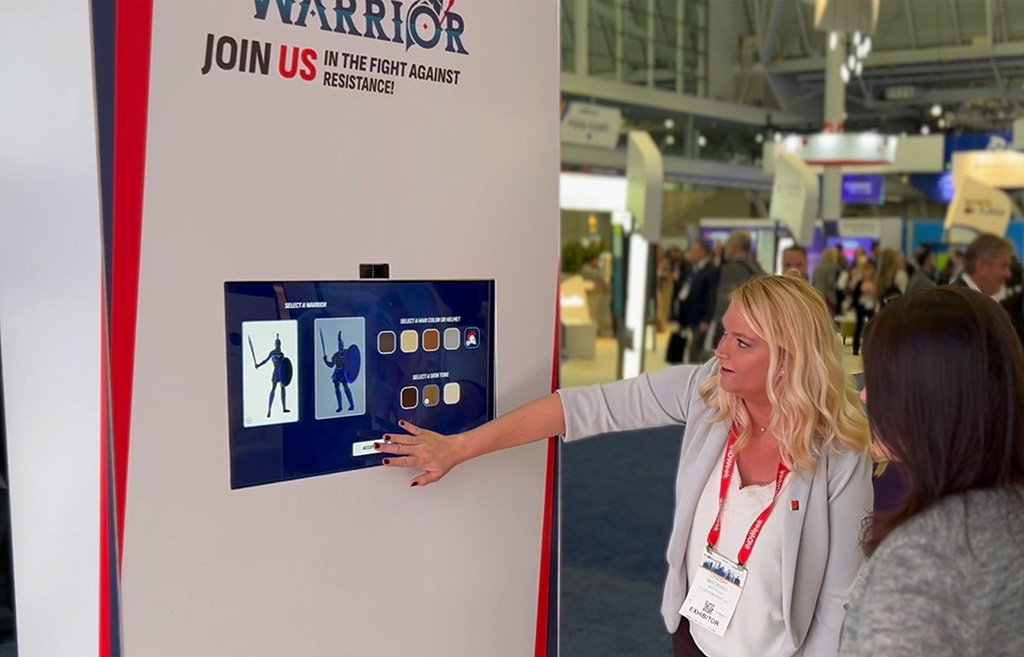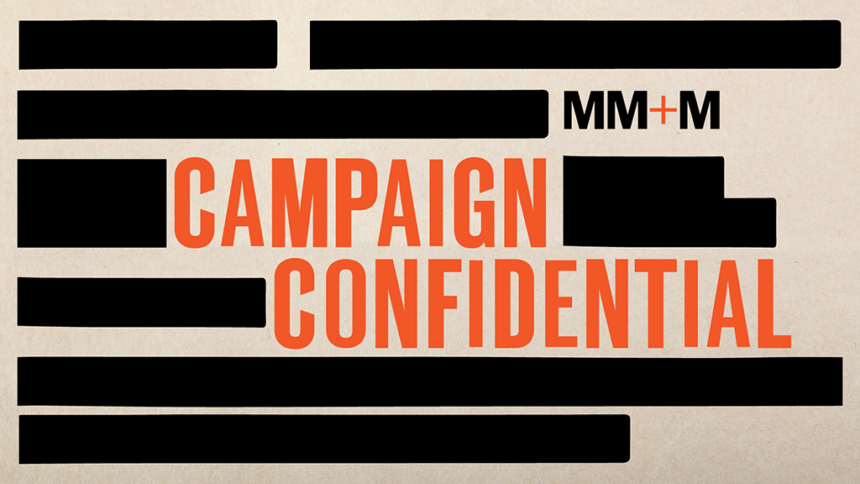Grabbing the attention of visitors to conferences is always a challenge, as every healthcare marketer knows all too well.
“There’s a lot of noise. There are a lot of activities happening. There are hundreds of booths, in multiple different therapeutic categories,” says Brian Conway, associate director, marketing at Shionogi.
The Japanese pharmaceutical company, working together with its partner FCBCure, was looking for a way to stand out amongst all the other things that were happening on the show floor.
Ultimately, the strategy for standing out and drawing visitors to the Shionogi booth would be built around a universal truth: selfies are hard to resist. The same goes for generative artificial intelligence (AI) — even among attendees at infectious disease conferences.
With this in mind, Shionogi decided to host a generative AI photobooth that transforms people into warriors in the battle against infectious diseases.
The subsequent debut of the AI Warrior Portrait App, created by FCBCure, enabled congress attendees to see themselves as infectious disease heroes. The project was a hit, producing nearly 500 warrior portraits over the course of the three-day IDWeek conference in October.
Months removed from that initial success, Conway shares that the number of warrior portraits has now exceeded 1,000, thanks to the photobooth’s deployment at other medical conferences.
Embracing the warrior motif
The inspiration for the activation can be traced back to warrior-themed campaign imagery that Shionogi was already using. A cut-out figure of a warrior had proved an effective draw at events, with attendees posing next to it.

“We were thinking through how do we take that to the next level? FCB came and proposed this idea [for the generative AI photobooth],” Conway recalls. “The second this idea was presented to me, it clicked straight away. I thought, ‘I want to do that.’”
Conway’s reaction captures why the activation has proven successful, as Debra Polkes, managing director/creative at FCBCURE, explains. The photobooth’s participatory aspect helped to make it a source of buzz at IDWeek and other events.
“We wanted to create something that was interactive, innovative, inventive and felt aligned with Shionogi’s way of approaching business,” Polkes explains. “Part of what Shionogi wanted to do was invite the conference participants to be a warrior against infectious disease.”
And they were made into warriors, after being asked three questions — about gender, skin tone and whether the generated image should include a helmet or not. Visitors then had their portraits captured by the photobooth and transformed into a valiant disease-fighting warrior in about six seconds.
Training the AI
While generative AI has been the shiny new object for not only healthcare but the general public at large for more than a year, it is important to take a step back and recognize the power of these innovations.
While the warrior transformations took only a few seconds, the process of training the AI took months, as Conway explains.
“There were multiple times that the AI wanted to go down a different path. With one of the earlier iterations, it was leaning in the direction more of a Japanese anime,” he says. “We had to rein in the AI and reteach it to focus on the historical timeframe that we’re looking to have it generate the images in. Some of the biggest challenges were just training the AI to get the output that we were looking to get out of it.”

Other times when the AI decided to venture down its own paths, Shionogi and FCBCure were happy with its decision.
“The AI had a tendency to shave a couple years off. That’s always a bonus if this thing makes you look 10 to 15 years younger,” Conway says with a laugh. “People were kind of surprised and happy about that.”
Of course, the end goal of the activation was to draw conference attendees to the Shionogi booth allowing representatives to make their pitch.
“As they are in line, we had the opportunity to educate on infectious disease,” Conway explains. “They’re kind of captive as they’re waiting to get this picture taken. We were engaging with them and able to educate them on infectious disease as they’re standing there.”
For Polkes, the photobooth experience — which Conway says Shionogi may use in other therapeutic categories in the future — is more than a shiny lure. She hopes instead that it will be seen as an embodiment of Shionogi’s approach and attitude.
“What I want people to take away is, ‘Wow, this is incredibly innovative and it is a reflection of Shionogi as a company. I want to learn more,’” she says.







